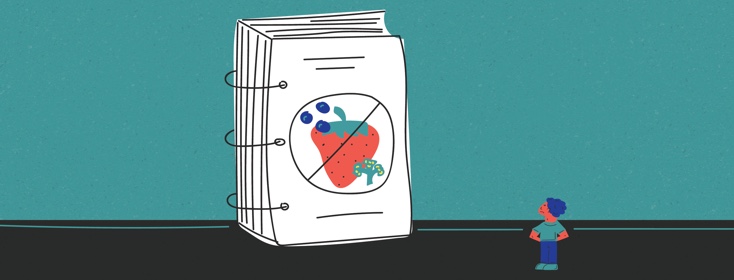After Transplant, Missing, Then Savoring, Strawberries
Strawberry season in Massachusetts – late June to early July – makes me think of the times after transplant when I couldn’t eat this sweet fruit with the sunshiny, summery taste and smell. That is, unless it was cooked and mushy.
This short season is a favorite time of year. Being from New York, it was a treat to go to the farm with the kids, get on the tractor bed, and go out to pick basketfuls.
Post-transplant diet
When I went home after my stem cell transplant, I lived by a big binder with sections explaining the do’s and don’ts of a low-microbial diet. It would lower my risk of getting sick while my immune system recovered.
I would need to follow it for 100 days after transplant. The plan called for phasing foods in. I was elated when I could eat a fresh bakery bagel as opposed to the packaged, store-bought facsimile assumed to have fewer germs. Strawberries came last.
I could eat fruit with a skin, but not raw “rough-textured” fruits and vegetables that can’t be thoroughly washed, such as broccoli, cauliflower, raspberries, blackberries, and, strawberries. My doctor said to hold off for even longer than the 100 days because it’s difficult to get the dirt out of strawberries and the others in that grouping.
The introduction of "fruit mush"
After I got some local straws for my kids, my daughter appreciatively smelled them. She savored the taste of a juicy one.
Then she saw the sadness on my face.
“Yuk!” she said.
“They’re horrible!”
It felt good to laugh about it.
During that period I did get to eat most of what I wanted, as long as it was cooked.
My mother, who stayed with me early in my recovery, labeled a new dish “fruit mush.” (More formally, it would be fruit compote.) It was strawberries, blueberries, apples, grapes, whatever we had around, cooked with a little water, cinnamon and lemon.
I could also make a “salad” with cooked green beans, tuna, hard boiled egg, olives, and maybe some artichokes out of a jar or can.
Getting my appetite back
It took a while for me to have an appetite. Like many after chemotherapy, I thought food and drink had a metallic taste. Adding lemon to must-have water helped, but it had to be from a squeeze bottle, not fresh.
After losing some 20 pounds, I needed to eat. But for weeks, nothing appealed. More than once, I took a few bites and threw up. My best throw-up was in the passenger seat of my son’s car when he was driving me to Boston. I threw up into a plastic bag…with holes in it.
A kind doctor said to me in the hospital, “You will eat again.” It seems obvious, but in the moment I was not sure. It was reassuring.
It got to the point where the sight of food made me anxious. My doctor told me to take a milligram of Ativan, wait a while, and then sit down to eat. That helped somewhat.
I also took a drug called Marinol, a capsule containing THC (delta-9-tetrahydrocannabinol) one of the active compounds in marijuana, approved by the FDA to treat nausea caused by chemotherapy. They said it could improve my appetite and also make me loopy. I don’t think I got enough, because it didn’t do either.
The best medicine was time, time to really want that strawberry and have to cook it, followed by more time to be able to eat one fresh, and even more time, leading up to today, when I can eat a handful and rejoice that I can do it without fear.

Join the conversation